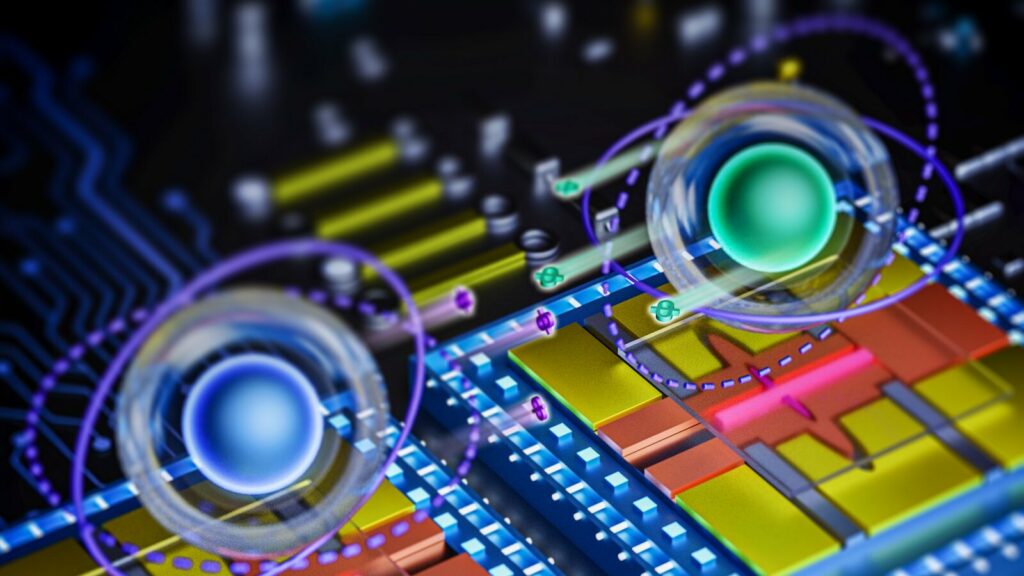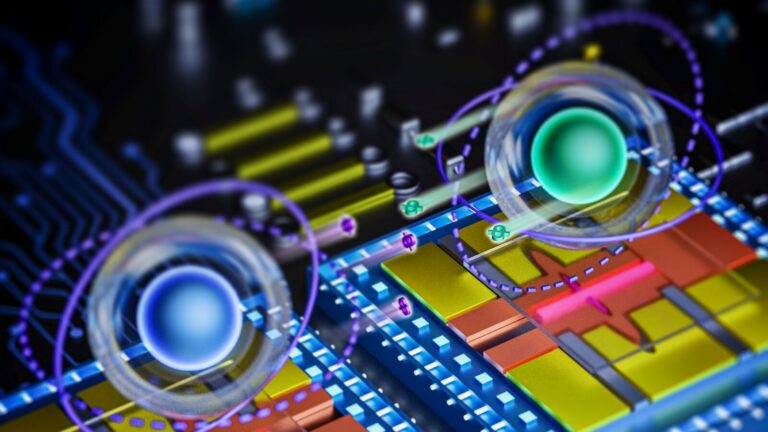Quantum Computing Breakthrough: Novel Architecture Achieves Electron Charge Qubit with 0.1 Millisecond Coherence Time
Coherence serves as a fundamental aspect of effective communication, whether expressed through writing, speech, or information processing. This fundamental principle also holds true for quantum bits, or qubits, which serve as the fundamental units of quantum computing. The potential of quantum computers lies in their ability to address challenges in climate prediction, material design, drug discovery, and other domains that were once considered insurmountable.
A team led by the U.S. Department of Energy’s (DOE) Argonne National Laboratory has achieved a significant milestone in advancing quantum computing. They have successfully extended the coherence time for their innovative qubit design to an impressive 0.1 milliseconds—almost a thousand times better than the previous record.

“Instead of 10 to 100 operations within the coherence times of traditional electron charge qubits, our qubits can execute 10,000 operations with very high precision and speed,” explained Dafei Jin, a professor at the University of Notre Dame with a joint appointment at Argonne’s Center for Nanoscale Materials. In our daily lives, 0.1 milliseconds may seem fleeting, akin to a blink of an eye.
However, in the quantum realm, this time frame provides a sufficiently extended window for a qubit to perform many thousands of operations. Unlike classical bits, qubits have the unique ability to exist in both states, 0 and 1. For any operational qubit, maintaining this mixed state for a prolonged coherence time is crucial. The challenge lies in protecting the qubit against the constant disruptive noise from its surrounding environment.
The team’s qubits encode quantum information in the electron’s motional (charge) states, hence the term “charge qubits.” “Among various existing qubits, electron charge qubits are especially attractive because of their simplicity in fabrication and operation, as well as compatibility with existing infrastructures for classical computers,” stated Jin, the lead investigator of the project. “This simplicity should translate into a low cost for building and running large-scale quantum computers.” Jin, a former staff scientist at the Center for Nanoscale Materials (CNM), a DOE Office of Science user facility at Argonne, led the discovery of their new qubit type reported last year.
The team’s qubit involves a single electron trapped on an ultraclean solid-neon surface in a vacuum. The choice of neon is crucial for its resistance to disturbances from the surrounding environment, as neon does not react with other elements. The neon platform ensures the protection of the electron qubit, guaranteeing a long coherence time. “Thanks to the small footprint of single electrons on solid neon, qubits made with them are more compact and promising for scaling up to multiple linked qubits,” explained Xu Han, an assistant scientist in CNM with a joint appointment at the Pritzker School of Molecular Engineering at the University of Chicago.
“These attributes, along with coherence time, make our electron qubit exceptionally compelling.” Following ongoing experimental optimizations, the team not only enhanced the quality of the neon surface but also significantly reduced disruptive signals. As reported in Nature Physics, their efforts yielded a coherence time of 0.1 milliseconds, a thousand-fold increase from the initial 0.1 microseconds. “The long lifetime of our electron qubit allows us to control and read out the single qubit states with very high fidelity,” stated Xinhao Li, a postdoctoral appointee at Argonne and the co-first author of the paper. This time frame exceeds the requirements for quantum computing. Another crucial attribute of a qubit is its scalability to connect with many other qubits.
The team achieved a notable milestone by demonstrating that two-electron qubits can couple to the same superconducting circuit, allowing information transfer between them. This marks a significant stride toward two-qubit entanglement, a critical aspect of quantum computing. The team has not fully optimized their electron qubit and will continue efforts to extend the coherence time further, as well as to entangle two or more qubits. In addition to Jin, Han, and Li, contributors from Argonne include postdocs Xianjing Zhou and Qianfan Chen. Other contributors include co-corresponding author David I. Schuster, a former physics professor at the University of Chicago now at Stanford University, and Xufeng Zhang, a former staff scientist at CNM and now a professor at Northeastern University. Authors also include Gerwin Koolstra, Ge Yang, Brennan Dizdar, Yizhong Huang, and Christopher S. Wang. The collaborating institutions include Lawrence Berkeley National Laboratory, Massachusetts Institute of Technology, Northeastern University, Stanford University, the University of Chicago, and the University of Notre Dame.
This article is republished from PhysORG under a Creative Commons license. Read the original article.
Do not forget to share your opinion with us to provide you with the best posts !





0 Comments